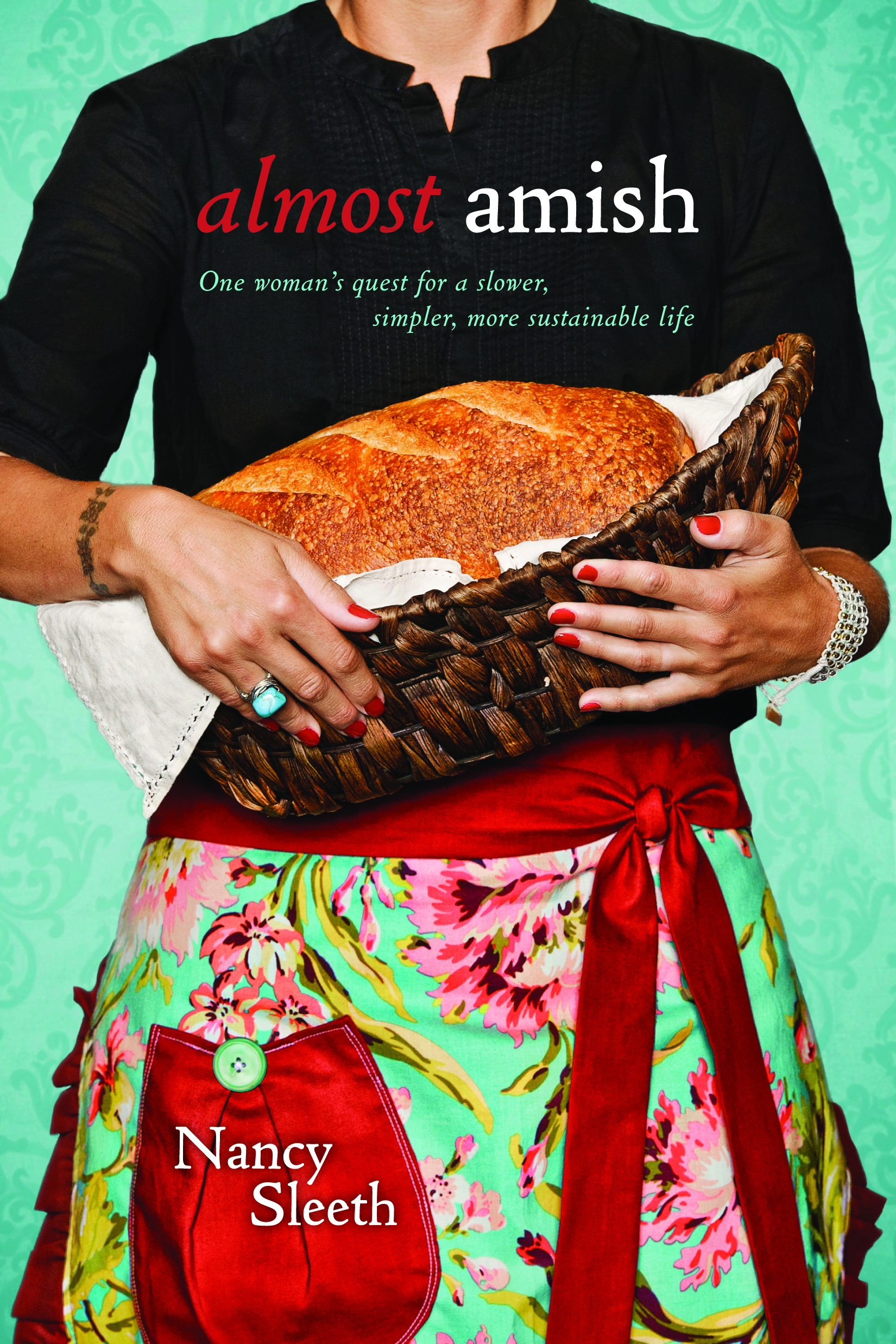Ah, the lure of the Amish. For whatever reason, the Amish way of life evokes feelings of simplicity, peace and perfection. When we moved to this area of Pennsylvania four years ago, I was intrigued by the Amish. I read lots of Amish fiction and rushed to the window every time I heard the sounds of a horse and buggy.
 Nancy Sleeth draws on this fascination with the Amish for her book Almost Amish: One woman’s quest for a slower, simpler, more sustainable life. I, too, long for simplicity and greater sustainability, so I was eager to read what the author had to say.
Nancy Sleeth draws on this fascination with the Amish for her book Almost Amish: One woman’s quest for a slower, simpler, more sustainable life. I, too, long for simplicity and greater sustainability, so I was eager to read what the author had to say.
Sleeth’s family had what they call a spiritual and environmental conversion about a decade ago. Not only did they align their lives with Christ, they significantly and drastically changed their lifestyle. They gave half their possessions away. They learned to live with less. They made caring for the earth their job. You can read more about what they’re doing and why here.
In Almost Amish, Sleeth uses 10 Amish principles to offer ways the rest of us who aren’t Amish can learn from their examples.
I really wanted to like this book, but by the second chapter — on technology — I was angry. And that attitude tainted the rest of the read for me. I think Sleeth has a lot to offer those of us who want a slower, saner, earth-friendlier life, and I look forward to adopting some changes in our home and life.
But I have two major issues with the book.
First, tone. Sleeth is a highly educated woman who also has been an educator. I can appreciate her passion for this topic, but I felt guilty more than inspired by her words. For each of the principles, she offers a practically perfect example of the life of someone she knows. So close to perfect, they almost don’t seem real, and even though I trust that these are real people, I don’t know if I’d want to hang out with them. They seemed unapproachable, and many of the principles, though practiced by Sleeth’s family, seem unattainable by regular folks.
I often felt like Sleeth was talking down to readers. I don’t know. Maybe it was just my interpretation.
Secondly, Sleeth seems to idolize the Amish, painting them as perfect examples of simplicity and living out God’s intended way of life. Even the more controversial aspects of their culture, like shunning, she justifies as necessary discipline. I find it hard to believe that a woman with a master’s degree education would say we all need to be like a group of people who don’t educate their children past eighth grade.
In defense of families, Sleeth quotes these statistics about the Amish: “the divorce rate is less than 1 percent, illegitimate births are nearly unheard of and the suicide rate is less than half the American average.” That all sounds good, but bear in mind, that’s the stuff that’s reported. I’m not saying Amish communities are dens of iniquity but let’s not pretend that bad things don’t happen to them, too. Those statistics made me wonder how many miserable Amish women were trapped in abusive marriages because divorce is rare or whether there were cases of rape or incest among the brethren.
The Young Center at Elizabethtown College, which Sleeth references in the book, provides a partial answer. View it on the site here.
Q: Do the Amish have problems?
A: Yes. They are humans and, like all human societies, have their share of problems. Sometimes rebellious youth act out and abuse alcohol or use drugs. Some marriages turn sour. There are documented cases of incest and sexual abuse in some families. Although such problems do exist, there are no systematic studies to enable comparisons with other groups or mainstream society. In general, the Amish way of life provides many sources of satisfaction for most of its members.
Don’t miss this point: “there are no systematic studies to enable comparisons with other groups or mainstream society.” And a key word at the end: “most.” I don’t doubt that the Amish way of life is satisfying and fulfilling. For most people. And that emulating an Amish lifestyle might provide the same for some non-Amish. But they are not a utopian society nor are they perfect.
In the end, I think I’m mostly disappointed with this book, although it has given me some guidelines for simplifying my life.